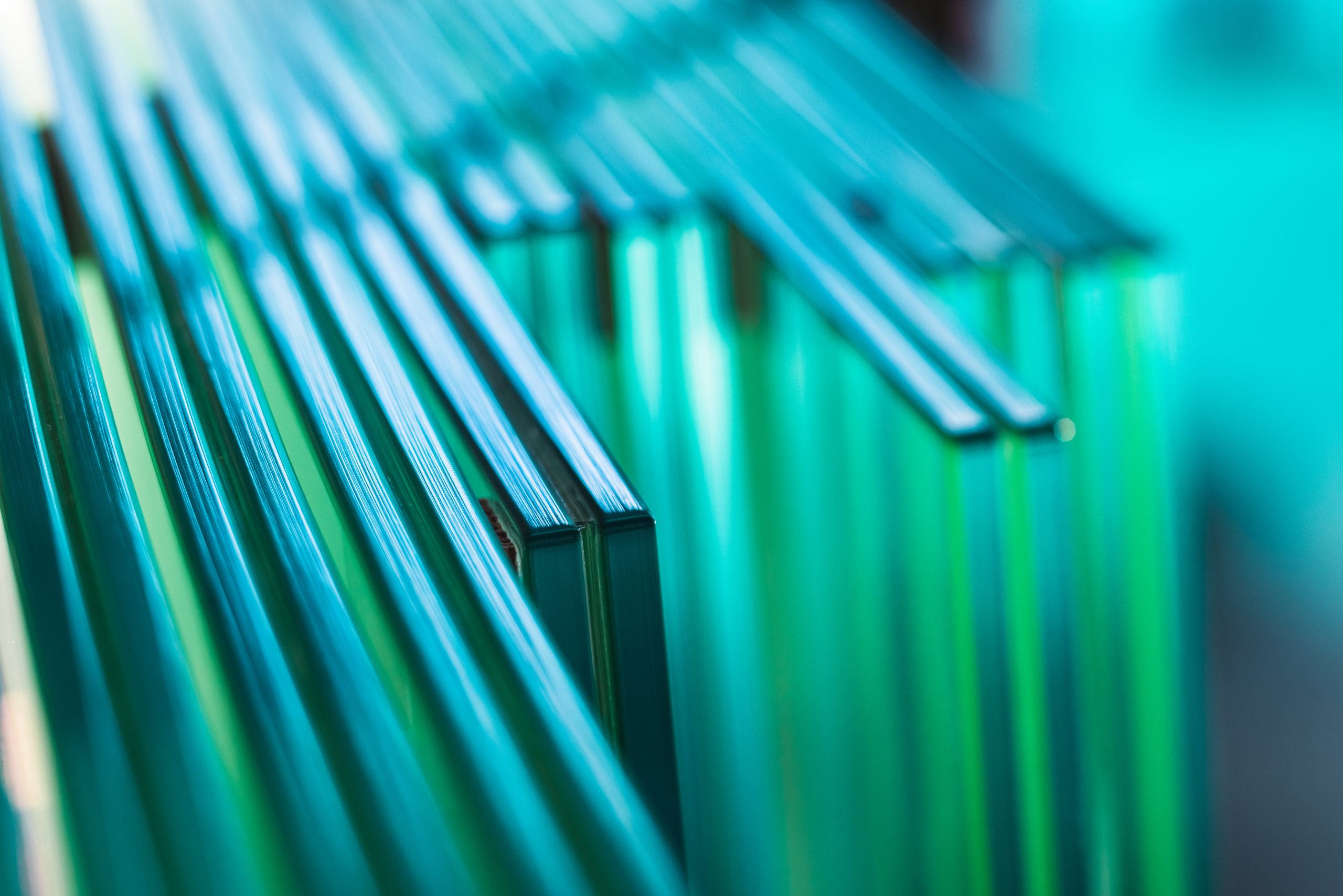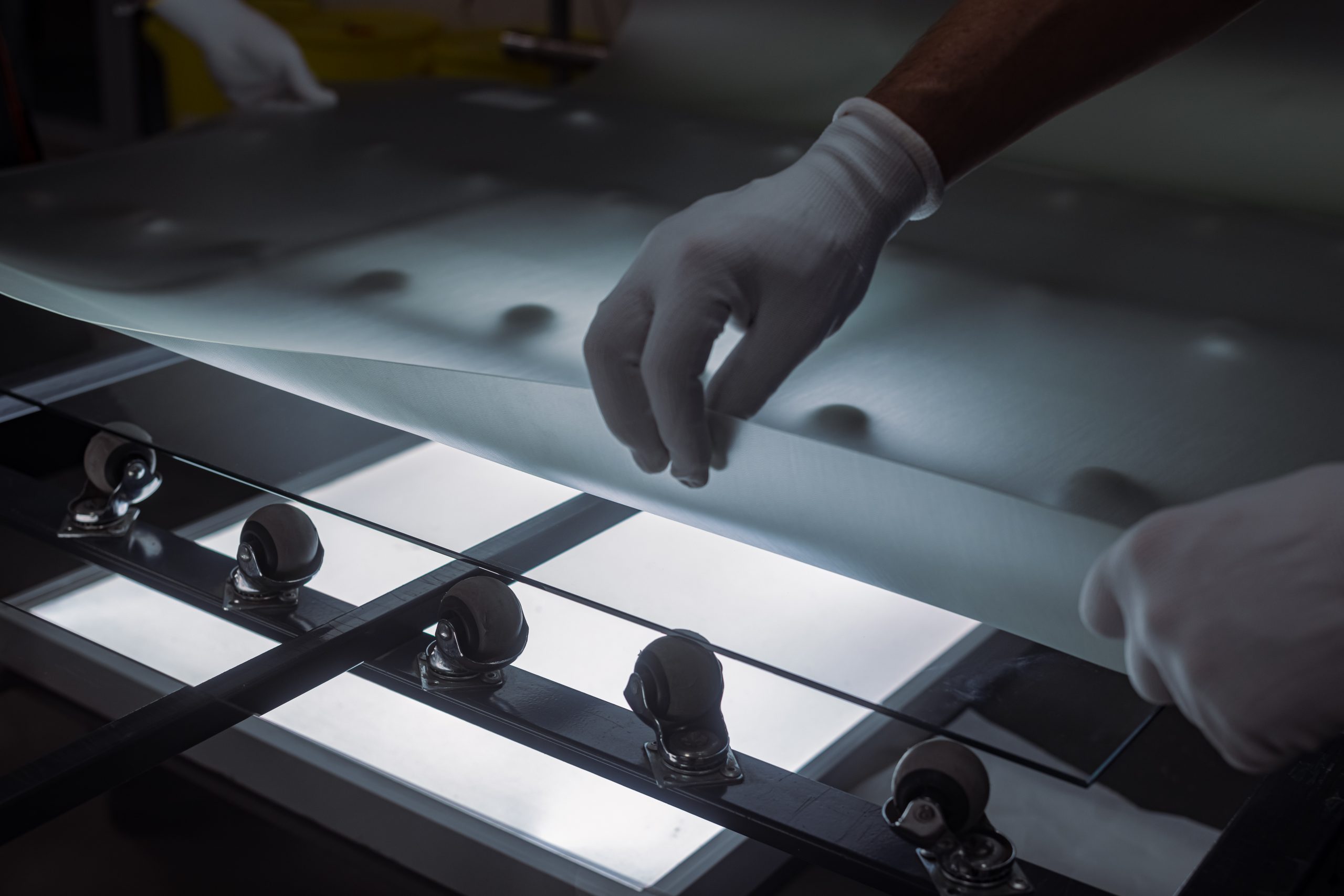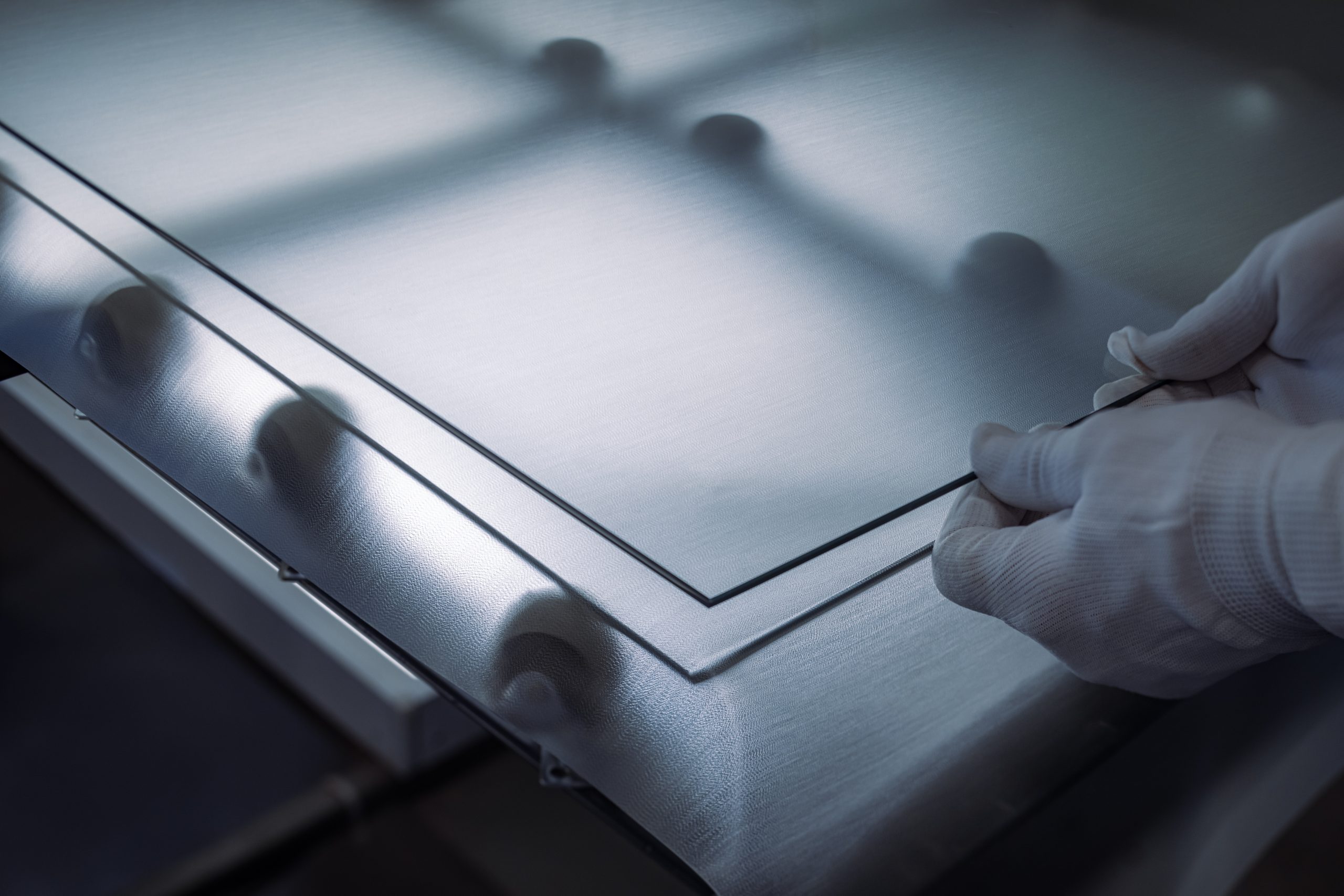Laminated glass
Laminated glass is manufactured by permanent bonding two or more plies of tempered flat float glass (clear, mass-coloured, painted or reflective) with PVB or EVA film.
Glass sheets in laminated panes can have a refined surface by enamelling or painting (screen printing) and covering with hard and soft, reflective and low-emission coatings. For aesthetic effects we can use a colourless or one-color (ordinary, opalescent) or patterned film.
Advantages
Safety & security
The main advantage of laminated glass is its increased strength and impact resistance. The films connecting the glass layers absorb the impact energy and increase the durability of the laminated glass. Although the glass can crack, the pieces of glass remain firmly attached to the film, reducing the risk of injury.
Durability
Laminated glass is durable, retains its colour and strength, and can be easily cleaned like ordinary glass. It is resistant to most acids and bases, and even to organic solvents.
Application
The most popular applications of laminated glass are balustrades, glass canopies, doors, partition walls.
Some text should be hrre...
Laminated glass is also used in shower cabins, as a wall cladding in kitchens and bathrooms.
Some text should be hrre...
Laminated glass can also be used as stairs and floors.
Some text should be hrre...







